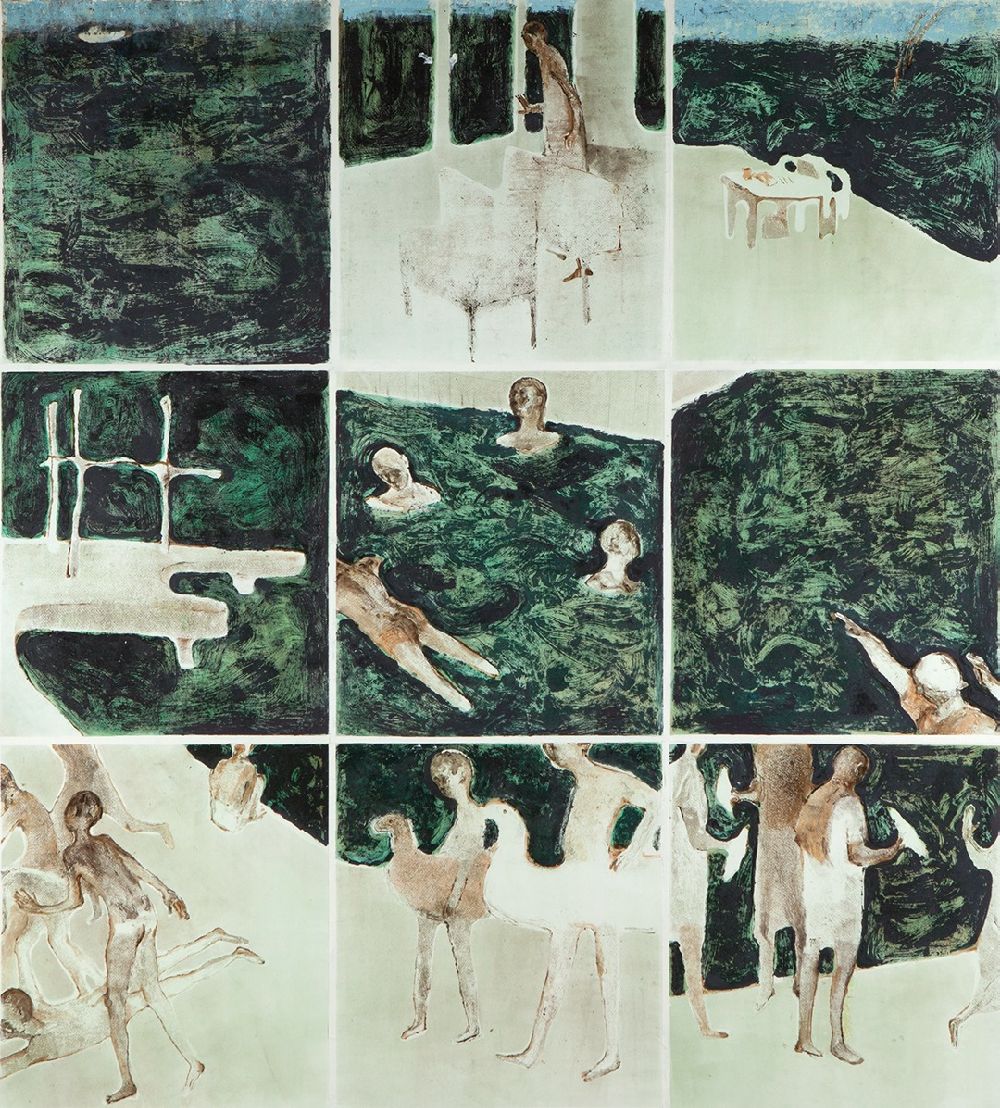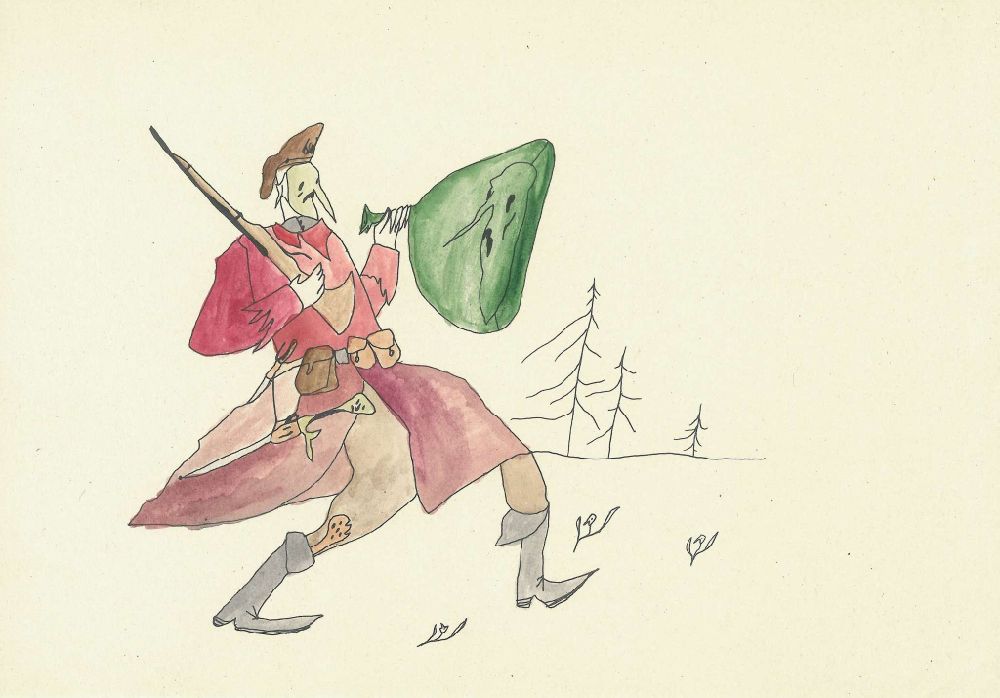
Tell us about your education
I graduated from HSE and Sorbonne, after that I had only short-term programs, related to science and technology. Nothing related to art.
When did your love towards art start?
It started from trips and learning other nationalities and cultures, I’ve been always looking for authentic stuff — hand made things with usage of local materials, they’re the guides to their own culture and traditions. No matter if it’s a carpet from Isfahan, silverware from the Andes, old household items from Hong Kong shops, a painting bought in a Laotian town, Bedouin jewelry found in a Cairo bazaar or even an obsidian idol from Easter Island, what intrigues me the most it’s the materials, the skill, the cultural aspect, and, of course, the beauty (not necessarily the "beautiful" one). Then it all settles down in a strange way and cohabits in my house.
How did you start your collection? What was the first artwork you purchased?
It's already hard to recall, but they were definitely the artworks from my trips – a skillful tank from the artist and our guide to Eastern Tibet of Lanka, a couple of large canvases from the studio of the Cuban artist Hover from Kamageya, Matthew Pack from the New Orleans Gallery.
What are the ways you choose the artists for your collection?
I have several approaches, the main one is buying very young and yet not very unknown, then I can afford them. To say precisely, I try to catch the moment when the artist has already "matured", but hasn’t entered a gallery yet, so I often look for them on personal pages, on online platforms, plus I get insights from friends. So I managed to fill my collection with works by Matiush First, Vladimir Kartashov, Lisa Bobkova and others before they came to galleries. The works of dozens of other young artists’re also in my collection, and I’m absolutely certain that soon they’ll loudly declare themselves – Andrey Arkhipov, Anya Lyalina, Grecht…
Matiush First. Flood. 2016, mixed media, 170 x 150 cm
The second approach’s a happy accident, these’re already well-known artists who’re difficult to afford in "ordinary life", but sometimes a miracle happens: an auction, a sale on a personal page or just "by acquaintance", so I managed to acquire more than one work by such artists as Andrey Kuzkin, Dmitry Bulnygin, Nikolai Koshkosh, Aidan Salakhova, Oksana Mas, Vlad Kulkov and others. The third approach’s the authors and works of my dream, I need to save up for them. I already have a long list, but it doesn't work out yet – every week there’re new young artists, the artworks by whom I immediately take (online, auctions, personal meetings with artists, or just by a message in a telegram). The common approach is the artists living now, my contemporaries, they fix our common time, my time in frame. After 10-20 years we will see if it was possible to fix our time in the works of these artists in general, and in my collection in particular. I have quite a few artists who’re no longer living, in particular, my small works by Alexander Labas, Ivan Sotnikov.
What are your favorite mediums?
As a base and a standard, paintings and graphics, although small sculptures and objects are slowly appearing. In particular ones made of granite and wood, as well as artworks on fabrics.
Grecht Steiman. Unnamed. 2019, watercolor, ink, 21 x 30 cm
Paintings from what cities and counties of origin do you mostly have?
I’ve visited about 85 countries and hundreds of cities, from each I brought something, not necessarily a «painting», but definitely a work of art. I even managed to buy a sculpture of an artist from Suriname, where I dream to go, but still don’t have an opportunity to get there - I found it in a gallery in Curacao. Problems often arise with airplanes, because I always carry a roll, stretcher or an enormous bag...
Is there a thing than brings your entire collection together?
Themes often don’t crystallize immediately, only after some time you realize that the whole wall is covered, for example, with artworks with a lonely character. If we talk about directions, then this is exactly the theme of a person – loneliness, transformation, unattainability and gravity, topics related to today, including politics; themes of myths, and therefore depth and unconsciousness. On the other hand, I have a lot of works without any meaning, I bought them simply because of beauty, skill, concept. The main thing is that the work should excite: intellectually, sexually, aesthetically. I mean to be with a soul. Sometimes there are correct, good, beautiful works without a soul, and I pass them by. Plus, I have to live with these works, watch them every day, I don't have a warehouse or gallery, so I buy something I can cohabit with. I’m not an "adult" collector yet, I have the right not to think about the museality, correctness, conceptuality of the collection, I take only what I like and what causes a reaction.
Do you have friends among artists?
I know a lot of people, the Facebook group "Shar i Krest" had a huge impact to this during the quarantine of 2020, then the wall between the artist and the collector collapsed. I, like many members of the group, personally met the artists after the quarantine, offline meetings took place, studio visits, larger purchases, and personal relationships were already established. Also, if I like some works of young people, then I immediately write them, ask them to meet, because it’s crucial to understand what this artist is thinking about, where he’s going, if he has the strength to move for a long time. Plus it’s interesting to see all their artworks in order to form a holistic view and understand if it’s mine or not mine. It’s also very important to communicate with gallery owners and curators – they are guides in this world, they add meanings. As a non-professional, it’s interesting for me to communicate with artists and gallery owners, it also helps in not related to art professional activities.

